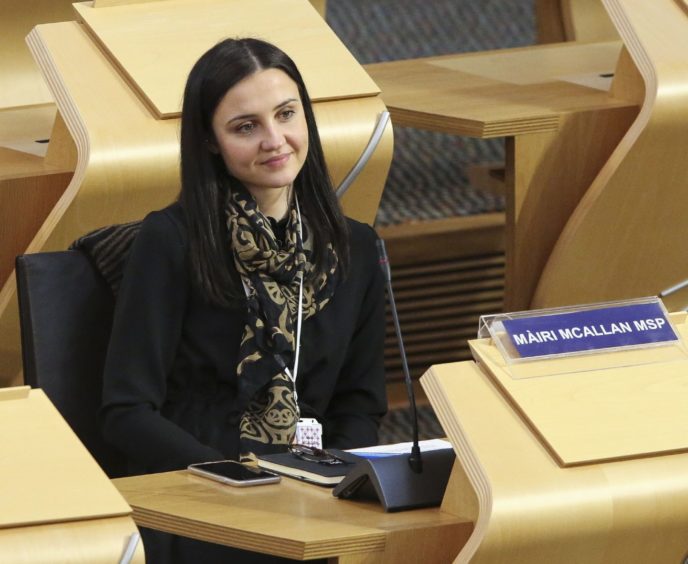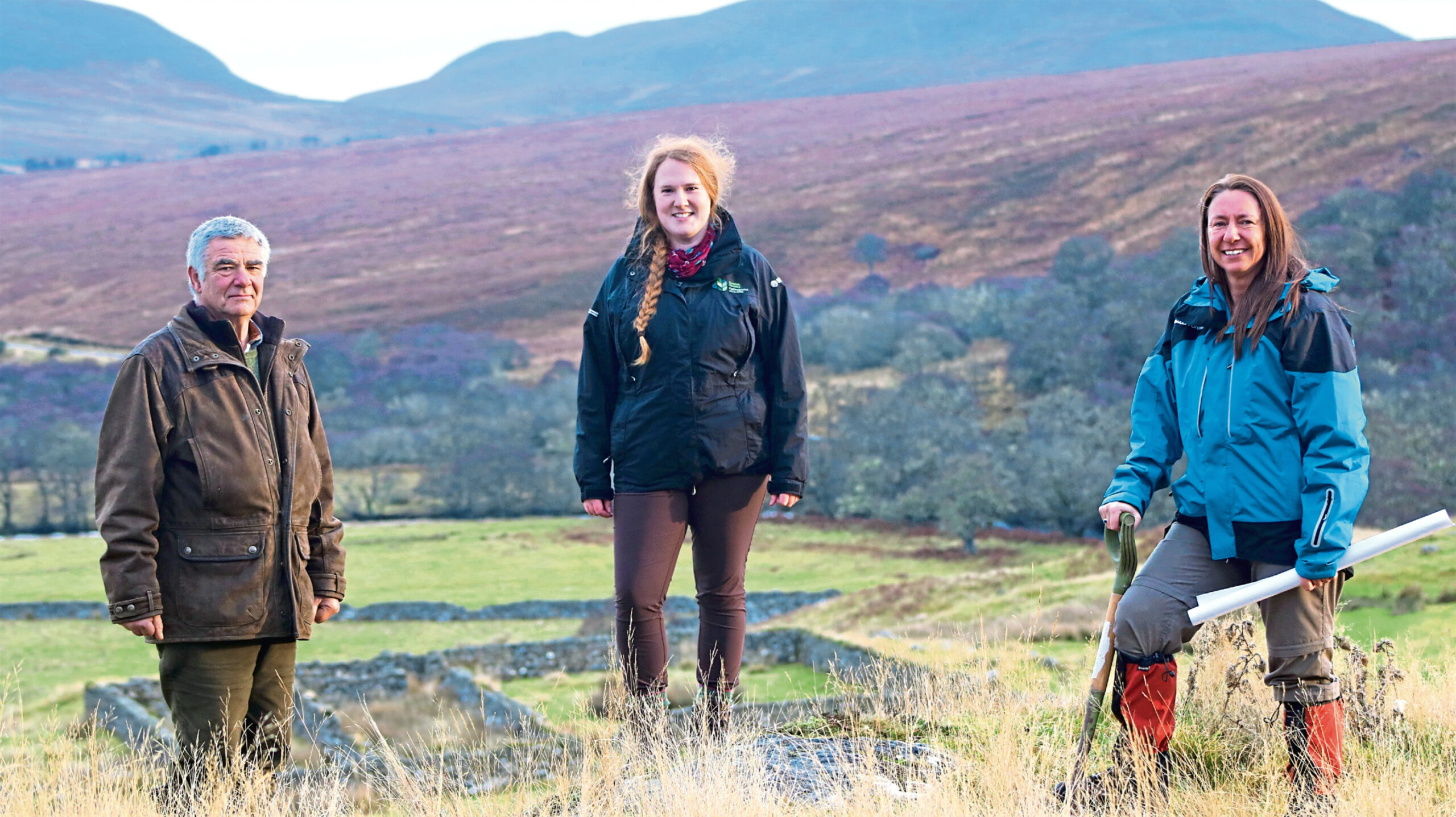
A planned forest backed by £3 million of public money has already been sold off market, we can reveal, as the secret sale of swathes of Scotland provokes rising concern.
Ministers hailed the proposed woodland in Sutherland as a landmark in the efforts to combat climate change when it was announced in December 2020, but the land has already been sold once and part of it is on the market again, with the public funds available a key selling part of the pitch to potential buyers seeking to offset their carbon footprint.
The so-called green rush by billionaires, investment firms, and big charities to buy thousands of acres of rural Scotland to create so-called carbon credits, to offset their own emissions or to sell, has triggered a booming market, with land prices spiralling upwards.
Communities and land reform campaigners warn Scotland is being sold in secret as buyers rush to secure Scottish Government grants aimed at securing net zero emissions by 2045.
Demand is unprecedented as prices of farmland in Scotland rose by 31% last year – compared to 6% in England – with a third of sales being carried out “off market” without publicity, while two thirds of estates sold were also bought in private deals.
Calum MacLeod, of charity Community Land Scotland (CLS), said communities must have an opportunity to buy land: “The prices have absolutely shot up because there is a limited supply and massive demand. It’s challenging in terms of giving communities an opportunity to purchase the land. There has to be a notification process to help level the playing field.”
In a report published last week, CLS warned the clamour for Scottish land is pushing up prices while secret off-market deals are preventing community buyouts backed by public funds. MacLeod, the charity’s policy director, said: “We see a lot of corporates looking to invest in estates to mitigate their carbon footprint or use it as an investment opportunity to sell on the carbon credits.
“We have new entrants into the land market and a lot of that is being fuelled by so-called green lairds who are looking to invest.
“One of the issues is the number of off-market sales, which is problematic from a transparency perspective. It’s important to know if there are significant and often large-scale land transfers happening particularly if they’ve got implications for the communities that live on the land.”
The Scottish Government aims to plant 18,000 hectares of trees a year by 2025 and forestry grants totalling around £72m will have to be handed out to wealthy landowners every year to ensure this happens.
The Forestry Grants Scheme has already awarded grants totalling £172m since it was set up in 2015. Ministers have also set aside £250m for grants aimed at restoring 250,000 hectares of degraded peat by 2030.
Andy Wightman, a land reform campaigner and former Scottish Greens MSP, said: “The Scottish Government is creating this value and there is a very strong argument for clawback clauses. If by spending millions it is creating an asset that increases in value of a benchmark of say greater than 3%, there should be a clawback.
“Otherwise, we’re simply sleepwalking into selling off our carbon sequestration potential in an unregulated voluntary market to wealthy individual investors and corporations to enrich them, to enrich the various intermediary bodies and professionals, and to actively reduce our potential to make a net contribution to cooling the planet. I think this is mad.
“The impacts on the land market are really the symptoms of a dysfunctional climate policy and relationship to natural capital, symptoms that are exacerbating land inequalities.”
Investment in Scottish estates rose to a record high of £250m last year, up 119% on 2020, according to the most recent market review by estate agent Strutt and Parker. The main driver, according to Robert McCulloch, head of the firm’s estate and farm agency, is the demand for carbon credits – tradeable permits representing the right to emit a set amount of carbon dioxide based on projects that reduce, avoid, destroy or captures emissions.
McCulloch said: “The international commitment to achieving net zero and the obligations for business and industry to forge their own route to carbon neutrality has seen a massive increase in demand for those Scottish estates which have potential for extensive carbon reduction.
“The emerging trend is for such estates to be bought by institutional funds, corporate entities and charitable bodies, whose motives for future management may be very different and whose deployable resources to purchase an estate are much more extensive.”
Community Land Scotland warns this can have serious consequences for local communities where the availability of land for affordable housing far outstrips supply.
It said: “Corporate owners and asset managers have little connection to local communities in Scotland. They operate around the world and aim to serve the interests of their shareholders rather than any particular place.
“Value generated from carbon sequestration and other natural capital-related activities will likely be extracted to benefit absentee shareholder owners, and deliver little benefit to local communities.”
The report calls for fundamental reforms to land governance and ownership and demands the Scottish Government break up large estates into smaller sites that can be sold to communities and stop off-market land sales under the guise of secrecy.
Land Reform Minister Mairi McAllan said the Scottish Government is to introduce new legislation to tackle the issues. She said: “The bill will aim to ensure that the public interest is considered on transfers of particularly large-scale land holdings, and will aim to introduce a pre-emption in favour of community buy-out where the public interest test applies, and where it is appropriate to do so.
“In addition our recently published National Strategy for Economic Transformation includes a commitment to establishing a values-led, high-integrity market for responsible private investment and we recently published new Interim Principles for Private Investment in Natural Capital, which will help to ensure it delivers social, environmental and economic benefit.”
Sold and sold again
A Highland estate was sold only a year after the former owner won a £3 million government grant to plant more than a million trees.
Now 11,270 acres of the wilderness is back on the market as the price of land in Scotland spirals upwards while landowners secure millions of pounds of public money for environmental projects to off-set carbon emissions.
The woodland scheme in Sutherland, 44 miles north of Inverness, was hailed as the largest this century when it was given the green light in December 2020. Then rural economy minister, Fergus Ewing, said it would play a key part in the Scottish Government’s plan to tackle the climate emergency, with the trees capturing 50,000 tonnes of carbon by 2045 – the equivalent of emissions from 11,000 cars being used for a year. Only a fifth of the woodland has so far been planted but the public money supporting the planting will remain in place for the new owners to continue the work.
A company part-owned by businessman Sandy Adam and his son, Gordon, bought Cambusmore Estate from Dornoch farmer Ken Greenland in an off-market sale earlier this year. They have now put a swathe back up for sale through Goldcrest Land and Forestry Group, an Edinburgh firm of surveyors specialising in the valuation and sale of woodland, with a closing date next month.
In November, Goldcrest partner Jon Lambert said: “Undoubtedly, the biggest story this year has been the insatiable appetite and rocketing prices for bare ground suitable for tree planting, an upward trend that has characterised the market in recent years and shows no sign of abating.”
The Goldcrest brochure advertising Cambusmore Estate says the buyer will have a significant opportunity to generate carbon credits. The brochure estimates there could be 750 hectares of degraded peatland, meaning the new owner could get a share of a £250 million 10-year funding package set aside by the Scottish Government to restore 250,000 hectares of degraded peat by 2030.
Renée Kerkvliet-Hermans, of the International Union for Conservation of Nature’s UK Peatland Programme, said: “Degraded peatlands can be worth quite a lot. You can get money from the government for active interventions to stop or massively reduce carbon emissions.”
The brochure also details the benefits of the £3.2m government grant to plant 1.4 million trees over three years and includes a table setting out how much public money will be paid to the new owner. Almost £2m will be handed over in the next two years, with about £200,000 a year to be paid in 2025, 2026 and 2027.
Experts say the grant will have increased the estate’s value as big businesses compete to buy up biodiverse Scottish land to offset their carbon footprint and burnish their environmental credentials.
Sandy Adam, who owns housing developers Springfield Properties, and who has previously donated £100,000 to the SNP, has a minority stake in Cambusmore Ltd. His son, Gordon Adam, is the principal owner, according to the land agent.
Springfield, which employs 700 people, was valued at £87m when it went public in 2017 and is behind dozens of major housing developments across Scotland.
The government quango responsible for the woodland creation scheme insists the grant money will not be paid in full unless every single promised tree is planted.
However, locals say the sale of the Highland estate is another example of millionaires trading the land under their feet and leaving them with little or no say in how it is managed. Off-market sales also prevent communities from tabling their own bid backed by the £10m-a-year Scottish Land Fund.
Magnus Davidson, a rural-economy researcher at the University of the Highlands and Islands who is based in Thurso, said: “This landowner on my doorstep in the Highlands was awarded millions of pounds in public funding to plant trees so that estate was worth a lot more that it was worth before and it’s just been sold in an off-market sale, making it impossible for the community to register a late interest in purchasing the land via community right-to-buy legislation.
“It could be the new owner has an interest in the carbon credits, it’s impossible to say at this stage, but that estate would offset my current annual carbon footprint for 5,000 years.
“In the future, arguably, the new owner of Cambusmore Estate can sell the carbon credits in those trees on the open market to the highest bidder – the BPs and Shells of the world – who are just using that to offset emissions from oil and gas that we probably shouldn’t be burning in the first place.”
The new 933-hectare woodland at Cambusmore is to stretch for more than seven miles of Strath Carnaig and will be made up of native species Scots pine, birch, rowan, oak, aspen and alder.
When the grant was awarded in December 2020 then owner Ken Greenland spoke of his desire to increase the habitat for wildlife and connect native woodland, saying: “I cannot wait to get started with fencing and planting.” He confirmed he sold the land in January but offered no further comment yesterday.
Scottish Forestry, the government agency that awarded the woodland creation grant, said it is in the process of completing the woodland creation contract paperwork with the new owner, adding: “Around 200 hectares of the planting has taken place but we have not paid the new owner any funds as yet.
“We’ve now been informed that the current owner may sell the Cambusmore Estate. If the estate was sold again we would work with the new owners to fulfil the obligations of the Forestry Grants Scheme contract which runs for 20 years. Public funds will still be protected – if the woodland works are not completed, or trees are removed, we can reclaim any grants.”
Peter Graham, land agent for Cambusmore, said: “The company is selling the western section and retaining the farmland of about 1,200 acres.”
Springfield said it is not involved in the purchase or development of the area, adding: “Cambusmore Ltd is a company owned principally by Gordon Adam and Sandy Adam is a minority investor in the company and is not part of the leadership team for the project.”
The Green Rush
There are a number of ways Scotland’s landowners can create carbon credits, from planting woodland to restoring damaged peat moors.
The credits represent the right to emit a set amount of carbon dioxide and can be traded on carbon markets. Rising demand should see prices rise to £40 per tonne of CO2 by 2030.
The credits are often purchased by big businesses keen to offset their carbon footprint and burnish their green credentials. There are two carbon credit schemes operating in Scotland – the Woodland Carbon Code, which generates carbon credits based on tree planting and has been operating since 2011, and the Peatland Code which generates credits based on restoration and was launched in 2015.
In Scotland, the target is to reach net zero emissions by 2045 so ministers have set aside huge sums of public money to incentivise landowners to create woodland and restore peatland.
The Forestry Grant Scheme, launched in 2015, offers financial support for the creation of new woodland and has paid out £172m so far. The Peatland Action Fund, which has been backed by £250m of public money until the end of the decade. The £55m Nature Restoration Fund was launched in July last year to encourage the restoration of wildlife and habitats over the next five years.
Fundamental reform needed of the way our land is owned and managed
by Miriam Brett
Scotland’s large rural land mass, highly concentrated land ownership, lightly regulated land market, and favourable tax and subsidy regime has created a highly attractive destination for investors – from wealthy individuals and charities to asset management firms and corporations – seeking to purchase land for carbon offsetting.
The emerging value associated with carbon and natural capital is contributing to soaring demand for rural land in Scotland, and contributing to upwards pressure on rural land prices, and many of the recent land market acquisitions are characterised by extractive business models.
The rapidly changing rural land market poses challenges to the Scottish Government’s ambitions to deliver a just transition and redirect wealth back into local communities, giving control and benefits to the people living there.
Protecting the climate and environment should undoubtedly be the central priority for policymakers, but how we do so – and who benefits – matters.
There is a risk that the financial rewards from Scotland’s natural capital potential will fail to generate inclusive prosperity for local communities. In place of this, action can be taken to, among other key goals, curtail absentee corporate and individual models of land ownership, scale community ownership, and establish new sources of finance to support community wealth building goals.
How land is owned and managed is perhaps the most important foundation upon which any community wealth building strategy rests, and while legislation is due to be implemented, the speed of Scotland’s rural land market developments means that where possible, more action is needed imminently.
From the creation of a public interest test to promote good governance and creating a mandatory system of certification for carbon credits, to a long-term ambition to replace non-domestic rates with a land value tax and the establishment of a dedicated fund to support community-owned initiatives at the Scottish National Investment Bank, fundamental reforms to the ownership and governance of land are required to deliver a community wealth building approach.
Miriam Brett is Director of Research and Advocacy for the Common Wealth think tank and co-author of the report Community Wealth Building and a Just Transition to Net Zero

Enjoy the convenience of having The Sunday Post delivered as a digital ePaper straight to your smartphone, tablet or computer.
Subscribe for only £5.49 a month and enjoy all the benefits of the printed paper as a digital replica.
Subscribe © PA
© PA © Supplied by Scottish Forestry
© Supplied by Scottish Forestry